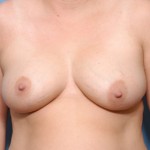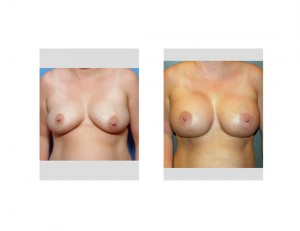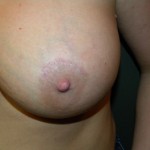Background: Breast augmentation remains as one of the most popular and commonly performed of all body contouring procedures. Because breast augmentation involves two breasts, the symmetry of the result is very important. But few women have perfect asymmetry between their breasts and many have quite significant differences.
Breast asymmetry involves either the size of shape of the mound and/or the size and position of the nipples. Mound differences can almost always be improved by the size of the breast implant, whether it in volume or projection. Nipple differences, particularly those in the horizontal dimension, will be worsened by breast augmentation. When the nipples are at two different levels horizontally, they will become more so as the mound size increases. What looks a little cock-eyed when the breast is small will become more so as the breast becomes bigger.
Observing these nipple differences before surgery is important so the patient is aware of this aesthetic concern and maneuvers to address this problem are discussed. One nipple adjusting procedure is the superior crescent mastopexy or nipple lift. By removing a crescent or half-moon of skin above the nipple, it can be moved upward 1 to 1.5 cms at the time of breast augmentation surgery. This can lift up a nipple that is lower on one side or both sides can be done if there is a minor degree of breast ptosis or sagging of both breasts.



Case Highlights:
1)Breast augmentation is frequently performed in women whose breasts are not symmetric either in mound or nipple position. Their postoperative expectation, however, is that their enlarged breasts will be more symmetric or have perfect symmetry.
2) The horizontal position of the nipple and its positional symmetry between the breasts is one of the most important markers to note before breast augmentation surgery.
3) Modest degrees of nipple asymmetry can be improved with superior crescent mastopexies or nipple lifts. This can be an important additive procedure that may need to be done with breast augmentation to reduce asymmetry.
Dr. Barry Eppley
Indianapolis, Indiana


